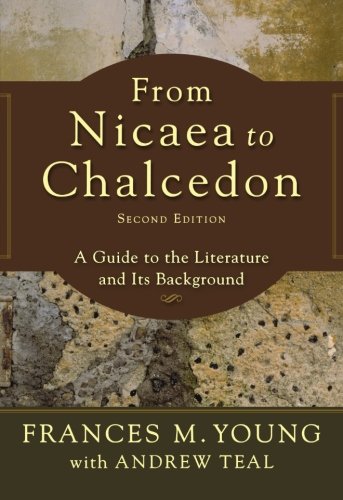


Full description not available
Z**F
Updated standard work
This was a solid volume on the 4th century debates. It gives good outlines of the people, places, and topics which it covers. This is recommended for those entering into the 4th century controversies. I would recommend Ayers (Nicene and its Legacy) or Behr (Nicene Faith vol. 2 parts 1 & 2) for more depth and detail.
E**S
The Background to the early Ecumenical Councils
Young's book remains the classic ccount of the personnel and theological/political issues that constituted the the shaping of the early church between AD 325 and 451. It elucidates the conflicts and theological talking-points that form the background to the conciliar canons, giving them historical depth.
R**N
A recommended resource for studying the Creeds of Christendom.
A great overview with quite a bit of detail concerning the major creeds! An excellent book with substantial material.
O**E
Very good
I needed this for research purposes and it fit the bill quite nicely.
D**S
Five Stars
Product arrived on time and as described.
D**N
Five Stars
Exactly as expected.
S**E
Outstanding Resource for Studies in Church History
This is exactly what I expect from a solid, scholarly study of early church history. It is clear, well-written, engaging, formatted well, and outlined in a manner that is easy to follow. In an orderly way, Young writes about Eusibius, Arius, Athanasius, Didymus the Blind, Basil, Gregory of Nyssa, Cyril, Chrysostom, Appollinarius, Theodore of Mopsuestia, Nestorius, and quite a few others from this time period (4th-6th centuries) along with the conficts the church faced in these years.The book has a great bibliography if the reader is interested in further studies of certain areas. There is also a helpful topical/subject index in the appendix. One great thing about this book is that the sections can stand alone. In other words, if one simply wanted to read about Basil and Cyril, for example, he/she would simply find these sections in the index and read them. Granted, many of these names and controversies overlap, yet the book is written in such a way that it will be a great resource to utilize for a "big picture" study or a detailed one of certain names, dates, and controversies.This book is not for the "average" layperson. It is thick (just under 400 pages), written in a small font, and full of names/dates/doctrines with which most laypeople would be overwhelmed. However, this is a great resource for seminary students, pastors, teachers, and any serious student of church history. Highly recommended!
E**Y
Superb and insightful introduction to Christian literature of the 4th and early 5th centuries
It's rare to find a text like this which is so readable, and which despite being an introduction is so deep and insightful, and which instils a great desire to pursue the subject further. Professor Young's text covers Christian literature of the 4th and early fifth centuries (roughly between the councils of Nicaea and Chalcedon of the title), in roughly chronological order but in thematic chapters.1. Church history - Eusebius, plus Socrates, Philostorgius, Sozomen & Theodoret.2. The shaping of Nicene theology - Athanasius, plus Marcellus and other writers on Arianism.3. The literature of the desert - Athanasius, Apothegmata Patrum, Didymus the Blind, Evagrius Ponticus, the Macarian homilies & Theodoret.4. The Cappadocians - Basil of Caesarea, Gregory of Nazianzus, Gregory of Nyssa.5. Contrasting characters of the Late 4th century - Ephraim the Syrian, Cyril of Jerusalem, Epiphanius of Salamis, John Chrysostom, Nemesius of Emesa & Synesius of Cyrene.6. Literature of Christological controversy - Eustathius, Apollinarius, Diodore, Theodore of Mopsuestia, Nestorius, Cyril of Alexandria & Theodoret of Cyrus.I found particularly enlightening the chapters on Arianism and Nestorianism. Despite having read a number of works covering these, and despite this being an introductory work, I gained new insight into both of these and have been moved to investigate further. Prof. Young gives a fair hearing to Arius and Nestorius, and is not afraid to speak of the rather unpleasant side to Athanasius and Cyril of Alexandria, and from her analysis I am moved to feel that "Arianism" is more a product of Athanasius than Arius, and "Nestorianism" more a product of Cyril of Alexandria than Nestorius.Prof. Young also provides at the end of sections a bibliography of translation of works of the writer(s) discussed, plus modern studies. A superb book, and difficult to fault in any way.
Trustpilot
1 week ago
2 months ago